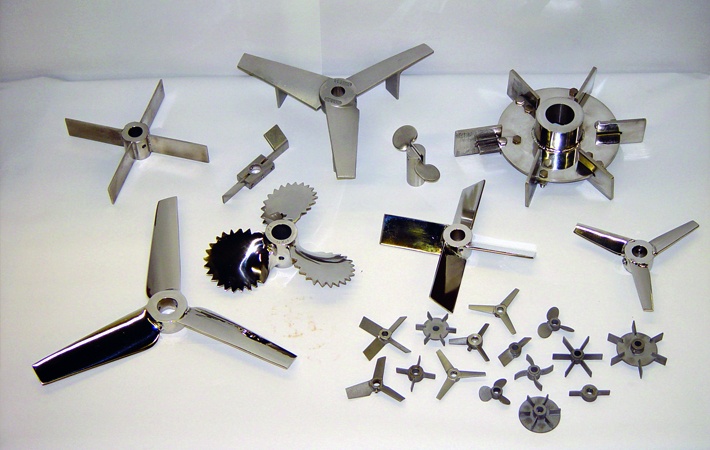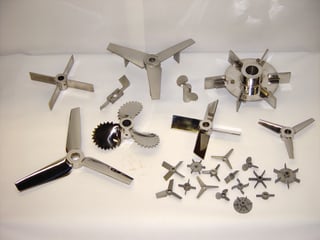
 Vessels fill, vessels drain. It's the nature of their job. But did you ever consider what happens to the mixer inside the vessel when it happens? Running an industrial mixer at full speed with less than desirable submergence can cause serious damage. To get a better understanding of what happens when minimum submergence is not met for industrial mixers, we talked to Sean Donkin, President and CEO of Cleveland Mixer.
Vessels fill, vessels drain. It's the nature of their job. But did you ever consider what happens to the mixer inside the vessel when it happens? Running an industrial mixer at full speed with less than desirable submergence can cause serious damage. To get a better understanding of what happens when minimum submergence is not met for industrial mixers, we talked to Sean Donkin, President and CEO of Cleveland Mixer.
According to Donkin, the short answer is no.
If a mixer impeller is only partly submerged in fluid, the mixer will be impacted negatively in a number of ways. First, the impeller could experience ventilation and possible cavitation of the fluid across impeller blades (depending on impeller type and RPM). Secondly, it could experience severe shock loading into the impeller hub and impeller shaft. If run for a long enough period, blade failure and impeller shaft failure is possible. This is an especially important consideration on cantilevered impeller shafts (those without bottom mount steady bearings), and side entry agitators.
So understanding that running an industrial mixer with a semi-submerged impeller can cause serious damage, how can you reduce the risk of running the agitator blades in a semi-submerged state?
Donkin suggests coordination/communication with the variable frequency drive and the liquid level controls on the vessel to reduce impeller speed by at least 50% during draining and filling of the vessel. By reducing the impeller speed, the amplitude of the shock wave is also reduced.
When designing your mixing system, design with conservative safety margins in the stressed members. Cleveland Mixer has a standard design practice that insures a 4.0 safety factor for the impeller shaft on shear stress. Tensile stress ratings are never below a 3.0 safety factor for the impeller shaft. Impeller blades have at least a 2.0 safety factor on shear and tensile stress.
Donkin states that because there are generous factors of safety built into the mixers they design, the impeller blades and shaft can handle momentary semi-submergence and running dry, such as during filling and draining of the vessel. However, sustained running with a semi-submerged impeller can result in catastrophic failure.
According to Cleveland Mixer, a stabilizer fin is a device attached to an impeller which directs the fluid flow pattern generated by rotation so as to resist shaft deflection, thereby allowing the use of longer shafts without steady bearings.
Impeller blades with stabilizer fins can help mitigate the effects of shaft wobble due to partial or minimal submergence.
So what is the minimal acceptable liquid coverage for a top entry agitator blade running at full design speed? Sean Donkin says a good rule of thumb is to have at least one impeller diameter equivalent for top entry agitators, and 1.5 impeller diameters equivalent distance from the impeller tip for side entry mixers is ideal.
Being mindful of the effect of liquid level on your industrial mixer is key to its health. If you have questions about your mixing system, it's a good idea to get a qualified engineer involved. They can make sure that your system is designed to give your process the best mix, and do so for a long time to come.
Want to learn more about industrial mixing & blending? Download our free guide to Mixing & Agitation below.
These Stories on Mixing
Headquarters and Service Center
Located outside Green Bay, WI
707 Ford Street
Kimberly, WI 54136
920-733-4425
OptiFlow Design and Build Center
1002 Truman Street
Kimberly, WI 54136
920-733-4425
Burnsville Service Center
12265 Nicollet Avenue
Burnsville, MN 55337
952-444-1949
Grand Rapids Service Center
26489 Industrial Blvd
Cohasset, MN 55721
952-444-1949
© Copyright 2024. Crane Engineering. All Rights Reserved. Privacy Policy.